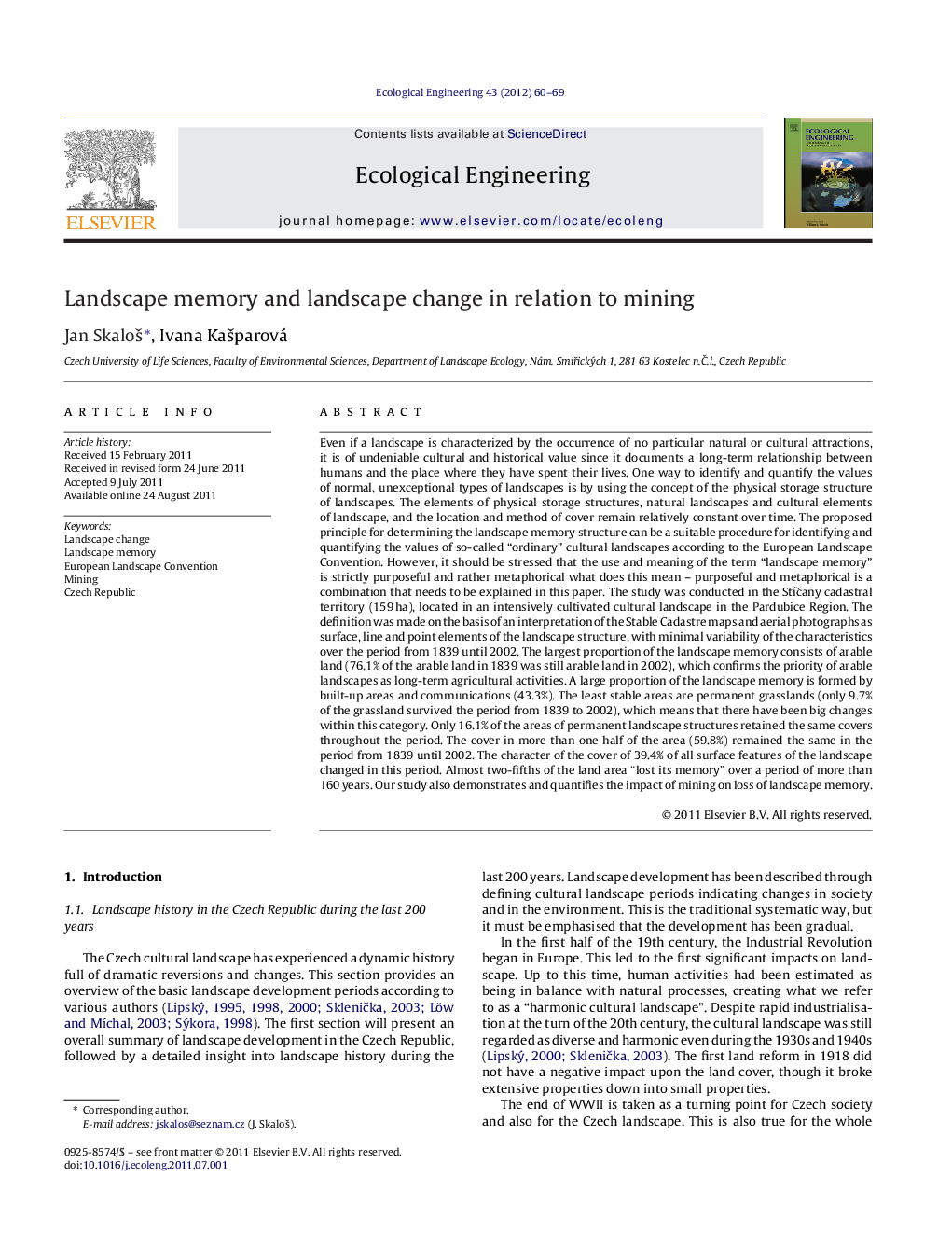| Article ID | Journal | Published Year | Pages | File Type |
|---|---|---|---|---|
| 4390062 | Ecological Engineering | 2012 | 10 Pages |
Even if a landscape is characterized by the occurrence of no particular natural or cultural attractions, it is of undeniable cultural and historical value since it documents a long-term relationship between humans and the place where they have spent their lives. One way to identify and quantify the values of normal, unexceptional types of landscapes is by using the concept of the physical storage structure of landscapes. The elements of physical storage structures, natural landscapes and cultural elements of landscape, and the location and method of cover remain relatively constant over time. The proposed principle for determining the landscape memory structure can be a suitable procedure for identifying and quantifying the values of so-called “ordinary” cultural landscapes according to the European Landscape Convention. However, it should be stressed that the use and meaning of the term “landscape memory” is strictly purposeful and rather metaphorical what does this mean – purposeful and metaphorical is a combination that needs to be explained in this paper. The study was conducted in the Stíčany cadastral territory (159 ha), located in an intensively cultivated cultural landscape in the Pardubice Region. The definition was made on the basis of an interpretation of the Stable Cadastre maps and aerial photographs as surface, line and point elements of the landscape structure, with minimal variability of the characteristics over the period from 1839 until 2002. The largest proportion of the landscape memory consists of arable land (76.1% of the arable land in 1839 was still arable land in 2002), which confirms the priority of arable landscapes as long-term agricultural activities. A large proportion of the landscape memory is formed by built-up areas and communications (43.3%). The least stable areas are permanent grasslands (only 9.7% of the grassland survived the period from 1839 to 2002), which means that there have been big changes within this category. Only 16.1% of the areas of permanent landscape structures retained the same covers throughout the period. The cover in more than one half of the area (59.8%) remained the same in the period from 1839 until 2002. The character of the cover of 39.4% of all surface features of the landscape changed in this period. Almost two-fifths of the land area “lost its memory” over a period of more than 160 years. Our study also demonstrates and quantifies the impact of mining on loss of landscape memory.
